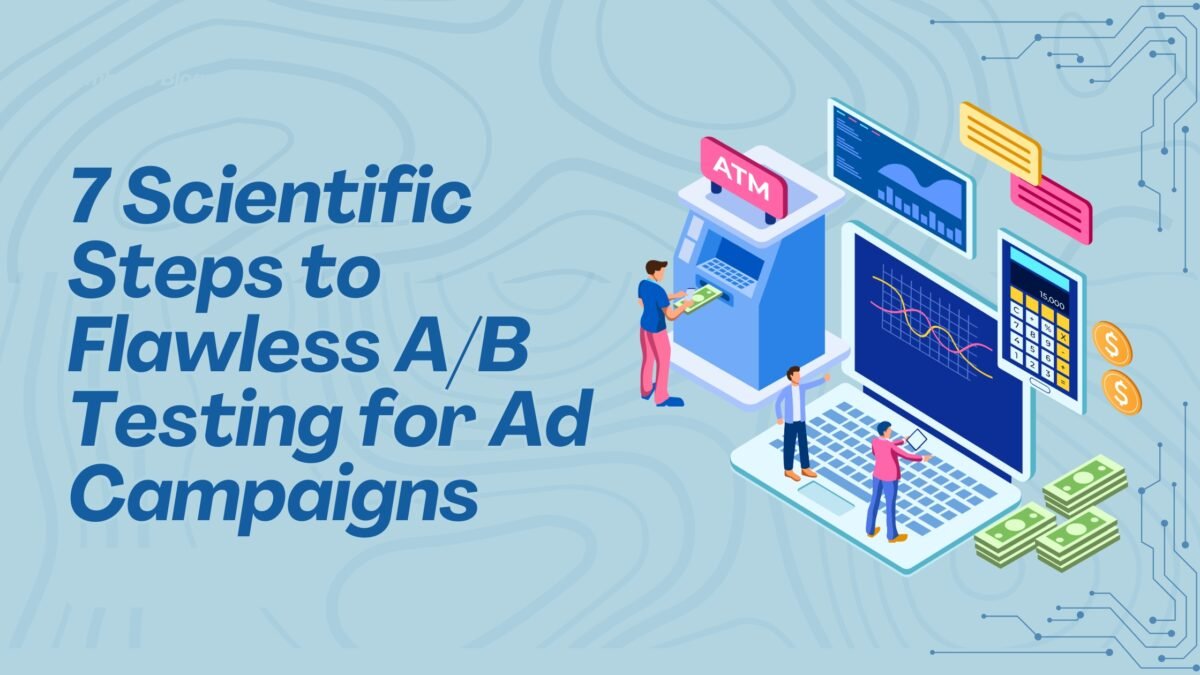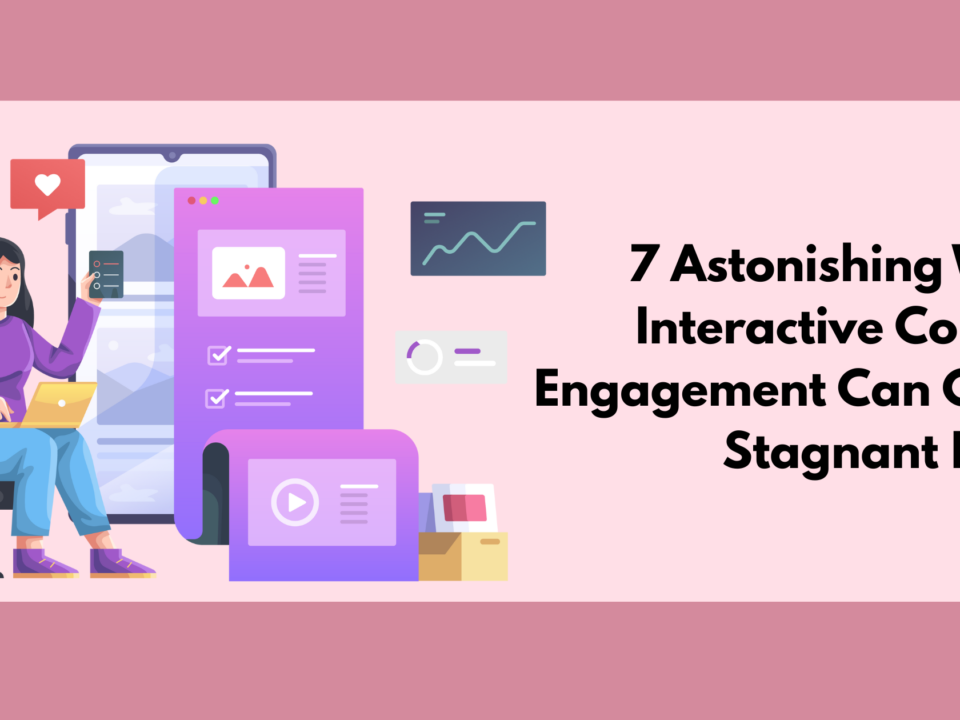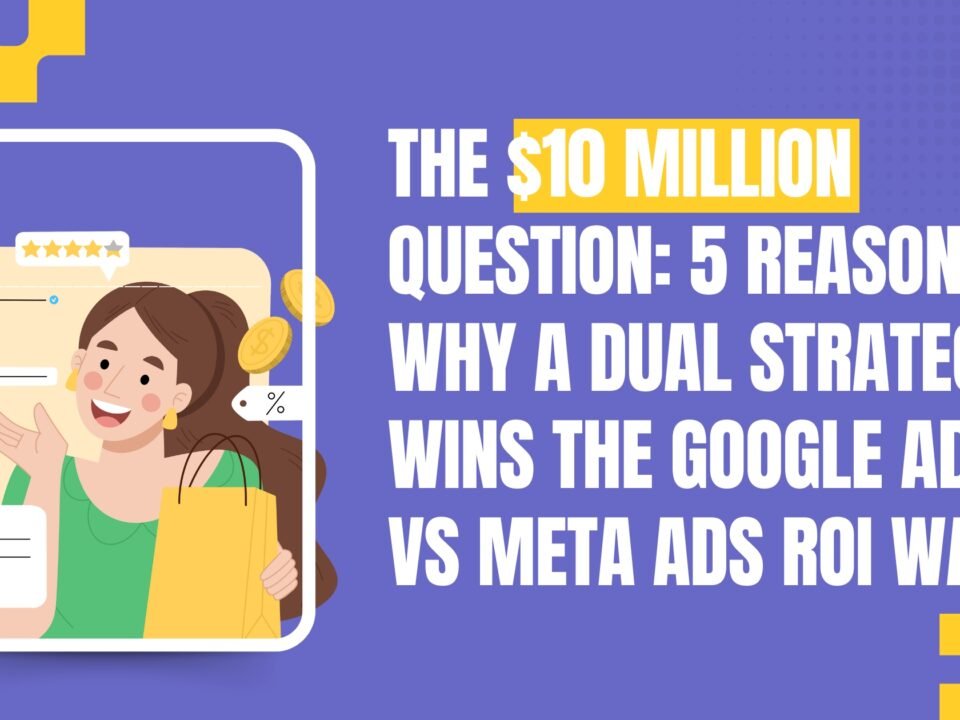
In the high-stakes world of digital advertising, every click, impression, and conversion costs money. The difference between an ad that barely breaks even and one that drives explosive growth often boils down to a single element: a headline, an image, or a call-to-action (CTA). Relying on intuition, industry best practices, or simply copying a competitor is a recipe for wasted budget. To consistently achieve high-performing creative, bidding strategies, and targeting, marketers must abandon guesswork and embrace a rigorous, repeatable process. This is the revolutionary domain of Scientific A/B Testing Ad Campaigns.
Scientific A/B Testing Ad Campaigns transforms marketing optimization from an art into a reliable science. It provides the empirical evidence needed to confidently declare a winner, allowing you to scale budgets on high-converting assets while eliminating poor performers. A/B testing, or split testing, involves presenting two different versions of an advertisement (Version A, the Control, and Version B, the Variant) to two statistically similar segments of your audience simultaneously. The goal is simple: to measure which version yields a superior result against a predefined Key Performance Indicator (KPI).
However, many marketing teams fail in their testing endeavors, not because of bad ideas, but because of flawed execution. They stop tests too early, test too many variables at once, or, crucially, misunderstand the fundamental statistics that underpin the process. This leads to false positives, wasted time, and decisions based on luck rather than reliable data. The complexity of modern advertising platforms—from Google Ads and Meta to TikTok and LinkedIn—requires a flawless methodology.
By committing to a scientific process, you not only improve campaign performance but also build an institutional memory about your audience’s true preferences—insights that can inform product design, landing pages, and overall brand messaging. This guide lays out the 7 Scientific Steps required to conduct Scientific A/B Testing Ad Campaigns with the rigor necessary to achieve reliable and scalable results. Mastering these 7 steps is the powerful difference between guessing and knowing in digital advertising.
Step 1: Formulate a Flawless, Data-Backed Hypothesis (The Core of Scientific A/B Testing Ad Campaigns)
The biggest mistake in A/B testing is testing for testing’s sake. Every experiment must begin with a clear, measurable hypothesis based on existing data, not a hunch.
A strong hypothesis follows a specific structure: “We believe that changing [Specific Element] for [Specific Audience] will result in [Measured Outcome] because [Data-Backed Rationale].”
Example: “We believe that changing the CTA button color from blue to orange (Specific Element) for first-time mobile visitors (Specific Audience) will result in a 5% increase in Click-Through Rate (CTR) (Measured Outcome) because heatmap data shows the blue button blends into the header, causing banner blindness (Data-Backed Rationale).”
- Data Sources for Rationale: Web analytics (high bounce rates, low CTR), heatmaps (scrolling/click patterns), user surveys, or even eye-tracking studies.
- Isolate the Variable: The scientific rule is to test only one element at a time. If you change the headline and the image, you cannot attribute the result to a single factor, rendering the test inconclusive. Focus on high-impact variables like primary image/video creative, headline, value proposition, or CTA copy.
Step 2: Calculate Statistical Significance and Sample Size (The Reliable Mathematics)
This is the most critical and often overlooked step in Scientific A/B Testing Ad Campaigns. Stopping a test before it reaches statistical significance guarantees an unreliable result.
- Statistical Significance Defined: This is the probability that the observed difference between your Control (A) and Variant (B) is real and not due to random chance. The industry standard is $95\%$ confidence ($p < 0.05$). This means there is only a $5\%$ chance of a Type I error (a false positive, where you declare a winner when none truly exists).
- Sample Size Calculation: Before launching the test, use an online A/B test calculator to determine the required sample size. This calculation depends on three factors:
- Baseline Conversion Rate (or CTR): The current performance of your Control (A).
- Minimum Detectable Effect (MDE): The smallest uplift (e.g., $5\%$ increase in CTR) you consider valuable enough to implement.
- Confidence Level: Typically $95\%$.
Knowing the required sample size dictates the duration of your test, ensuring the results are reliable before proceeding to the next step.
Step 3: Define Metrics and Audience Segmentation (Ensuring Flawless Execution)
A well-executed test requires precise targeting and measurement.
- Primary vs. Secondary Metrics: The primary metric must directly correlate with your hypothesis (e.g., Conversion Rate, CTR, Cost Per Acquisition/CPA). Secondary metrics (e.g., Time on Page, Bounce Rate) are monitored to ensure the winning ad isn’t negatively impacting other areas of the user journey.
- Audience Randomization: For Scientific A/B Testing Ad Campaigns to be flawless, the traffic split must be random and simultaneous. The test must run at the same time and on the same platform to prevent external factors (e.g., a holiday weekend, a competitor’s massive campaign) from skewing the results. Most ad platforms handle this $50/50$ traffic distribution automatically.
- Avoid External Segmentation (The Isolation Principle): Ensure the audience seeing Ad A is completely separate and isolated from the audience seeing Ad B. If a user sees both ads, the test is invalidated due to contamination.
Step 4: Execute the Test and Monitor for External Threats (The Powerful Monitoring Phase)
Launch the test and resist the urge to “peek.” Optional stopping—ending the test as soon as the confidence calculator hits $95\%$—is one of the most negative threats to A/B testing validity.
- Run for Full Cycles: Run the test for at least one full week ($7$ days) to account for day-of-the-week fluctuations (weekend behavior is often different from weekday behavior). For seasonal campaigns or low-traffic accounts, you may need two full weeks or more.
- Reach Your Calculated Sample Size: The test must run until it hits both the minimum duration and the required sample size determined in Step 2. Do not stop early.
- Watch for External Variables: Be aware of any external events that could influence your results—a major press release, a platform outage, or a shift in the market. Documenting these anomalies is key to reliable data interpretation.
Step 5: Analyze the Results (Rejecting the Null Hypothesis)
The moment of truth involves comparing the performance metrics and applying the statistical lens.
- Comparing Lift: Calculate the percentage lift (improvement) of the Variant (B) over the Control (A). If Variant B had a $2.5\%$ CTR and Control A had $2.0\%$ CTR, the lift is $(2.5 – 2.0) / 2.0 = 25\%$.
- The Null Hypothesis: In statistics, you start by assuming the Null Hypothesis is true: “There is no difference between A and B.” If your test achieves $95\%$ statistical significance, you reject the Null Hypothesis, confidently stating that the difference is real and Ad B is the winner.
- Neutral Results: A test that runs its full course but does not reach significance is not a failure; it simply means there is no reliable difference between A and B. Both ads are equally effective (or ineffective), and you save budget by not chasing phantom wins.
- Practical vs. Statistical Significance: Ensure the lift is large enough to matter for your bottom line. A $99\%$ statistically significant $0.001\%$ lift in CTR is statistically interesting but practically useless.
Step 6: Implement and Document the Winning Strategy (Scaling the Reliable Winner)
Once a clear winner is established, the process shifts from testing to implementation and institutional learning.
- Implementation: Immediately replace the Control (A) with the winning Variant (B). This new champion now becomes the Control for your next test, creating a powerful cycle of continuous improvement.
- Document Everything: Create a flawless record for every test: The Hypothesis, the Variables Tested, the Duration, the Sample Size, the Lift, the $p$-value, and the Final Conclusion. This documentation is your company’s proprietary knowledge base—a playbook for what resonates with your specific audience. This prevents teams from re-testing the same ineffective ideas.
- The Iteration Principle: An A/B test is never truly over. The purpose of a win is to inform the next hypothesis. If an image with a person smiling won, the next test should be: “Will an image with a person laughing win over a person smiling?” This dedication to iteration is the hallmark of true Scientific A/B Testing Ad Campaigns.
Step 7: Scale the Success (The 7-Step Cycle)
The final step is to apply the findings across the entire campaign ecosystem while looking for the next optimization opportunity.
- Cross-Platform Scaling: If a headline proved reliable on Facebook, test it on Google Search Ads or YouTube creatives. The insight often transfers across channels.
- Multivariate Testing (Post-A/B): Once you have found the optimal headline (H) and optimal image (I) through individual A/B tests, you can use multivariate testing to test combinations (H1+I1 vs. H2+I2 vs. H1+I2). This is far more complex and requires significantly larger sample sizes, but it’s the next logical step after the 7 Scientific Steps have been mastered.
Conclusion: Commitment to the Scientific A/B Testing Ad Campaigns
In an advertising landscape defined by real-time bidding and shifting consumer attention, guessing is no longer a viable strategy. The adoption of a scientific A/B testing ad campaigns framework is what separates highly efficient growth teams from those perpetually struggling with high CPA.
By rigorously following these 7 Scientific Steps—from the flawless hypothesis to the reliable calculation of statistical significance—you not only achieve immediate performance gains but also cultivate a culture of data-driven decision-making. Make the powerful commitment today to end the guesswork and establish Scientific A/B Testing Ad Campaigns as the non-negotiable standard for all your future ad spend. The investment in this scientific rigor will pay dividends in reliable, scalable, and predictable growth.




